Carolee Coy
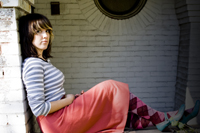
How did you get into photography?
I was given my first camera on my thirteenth birthday. Ever since then, I’ve been hooked. But honestly, my first formal introduction was in high school. I took a photo class my senior year and couldn’t get enough of the entire photographic process. Second semester of that same year, I was lucky enough to have the opportunity to attend the King Career Center (a federally funded charter/career school for high school students) in Anchorage. Most students there weren’t as serious about their courses as I was about photography, but it was an incredible opportunity for me. My knowledge of photography really grew. I knew then, without a doubt, that it was what I wanted to do for the rest of my life.
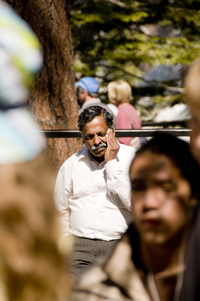
What impact do your photos have on you, personally?
They really are an extension of myself. The “Americana” series, for example, was something that I sort of just fell into. After having returned home from a mission over in Eastern Europe, I was fascinated by the mundane simplicity of the American West. And so, as I traveled throughout Utah and surrounding areas, the project began to create itself. My projects often help me to understand myself and define my perspective on life and my surroundings.
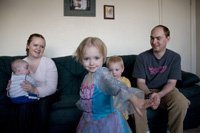
Can you tell us about the “Couples” series?
The couples series was actually my BFA thesis. Basically, I decided to focus on a very unique element of our own LDS subculture. Prior to this project, living, traveling, and exploring extensively in Europe and North America had been a primary source of inspiration. So, to mix things up a bit, I decided to approach the opportunity for a new body of work, looking no further than my own religious culture. I explored the undergraduate environment and society of Brigham Young University–Idaho. Attending BYU–Idaho provided me with an interesting perspective into young Mormon adults: the societal expectations placed upon them and their dedication to family life.
Combining my love of portraiture with the desire to explore this unique culture, I photographed young married, undergraduate students in their homes and apartments. Mormon students attending church-sponsored schools are four times more likely to be married before completing their undergraduate degrees than those at other universities in the United States. My unmarried status as an “old maid” nearing twenty-six made me to want to dig deep into the issues and realities of what I dealt with on a daily basis. As I stepped out of my comfort zone, knocked on doors, and approached strangers to request their participation in this project, I gained valuable experience in how to execute a project involving others.
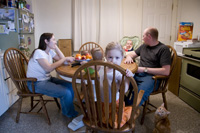
Your “Paris” and “Holga” collections are not only rich and enthralling, but they each tell a story. What was your experience like doing these shoots?
Paris was a very special time for me. During the time that I lived there, my camera really was an extension of myself. It went everywhere with me. I joked about how it was a third appendage. Anyway, as I went around day to day, wandering through the streets of Paris, I was keenly aware of my surroundings, and so every photograph became an experience. I shot over 200 rolls of film and catalogued each and every one. I didn’t just capture each image, but each moment captured me. When I look back on the photos from the trip, I remember what each day felt like and, in a way, relive it.
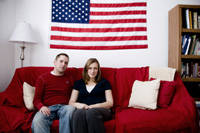
When shooting a subject, like the neon cowboy or the storefront with the striped awning, how do you choose the exact shot you want to put in the collection?
Editing is a huge part of putting together a collection. It’s a hard process to explain, but it’s one that is very important. I have a very close, intimate circle of friends and family who understand my art and motivate me. I turn to them a great deal as I edit down a project. Each piece is selected for a specific purpose. Whether it’s because of the successful execution of lighting and composition, or if there’s something in the image that conveys a certain idea—all of these elements factor into my selection.
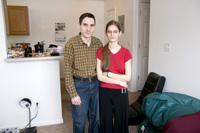
What techniques do you like to use?
I prefer to shoot with film, but because of cost, I’ve gone more digital as of late. I shoot 35mm as well as medium format and really enjoy the entire photographic process. Despite this move to digital, most of what I do happens in the initial stages of capturing the image. I guess what I’m trying to say is that I don’t do a lot of heavy photoshopping. I like to get it right when capturing, and I use Photoshop mostly like I would a dark room.
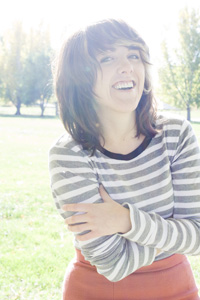
How has your style evolved since you first started?
I laugh when I look at the photos that I took when I first started. My style has definitely improved. But that’s to be hoped for and expected, right? Most noticeably, I have improved technically, but there have been vast improvements in all other areas as well. When I started to view myself as more of a potential professional photographer, I really envisioned that I’d be shooting high-end portraiture and fashion. I suppose that’s one other way that my photography has changed. I don’t see myself doing that kind of photography anymore. I see myself more as an artist and an educator. Photography, for me, is a way to express my views and to educate others on prevalent issues. I shoot in a more artistic and documentary style now than I ever did before.
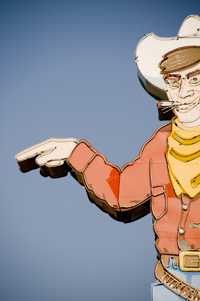
How do your beliefs affect your work?
My spiritual beliefs totally affect my work, because I am what I believe. Art, to me, is an extension of myself and of the way that I view the world around me. The situations and circumstances that I’ve had in my life are directly connected to how I’ve been raised and what I believe.
How do you see your art contributing to building the kingdom?
I see my work contributing to the building of the kingdom through the first two parts of the Church’s threefold mission—perfecting the Saints, proclaiming the gospel, and redeeming the dead. As an artist, I strive to edify and inspire those around me. In a way, I could say that through my art I am perfecting the Saints as well as striving for personal perfection. My photography has also been a great tool in proclaiming the gospel—because of the nature of my work, there are opportunities to discuss and share cultural habits as well as religious beliefs with those who know little to nothing about the Church. ❧
